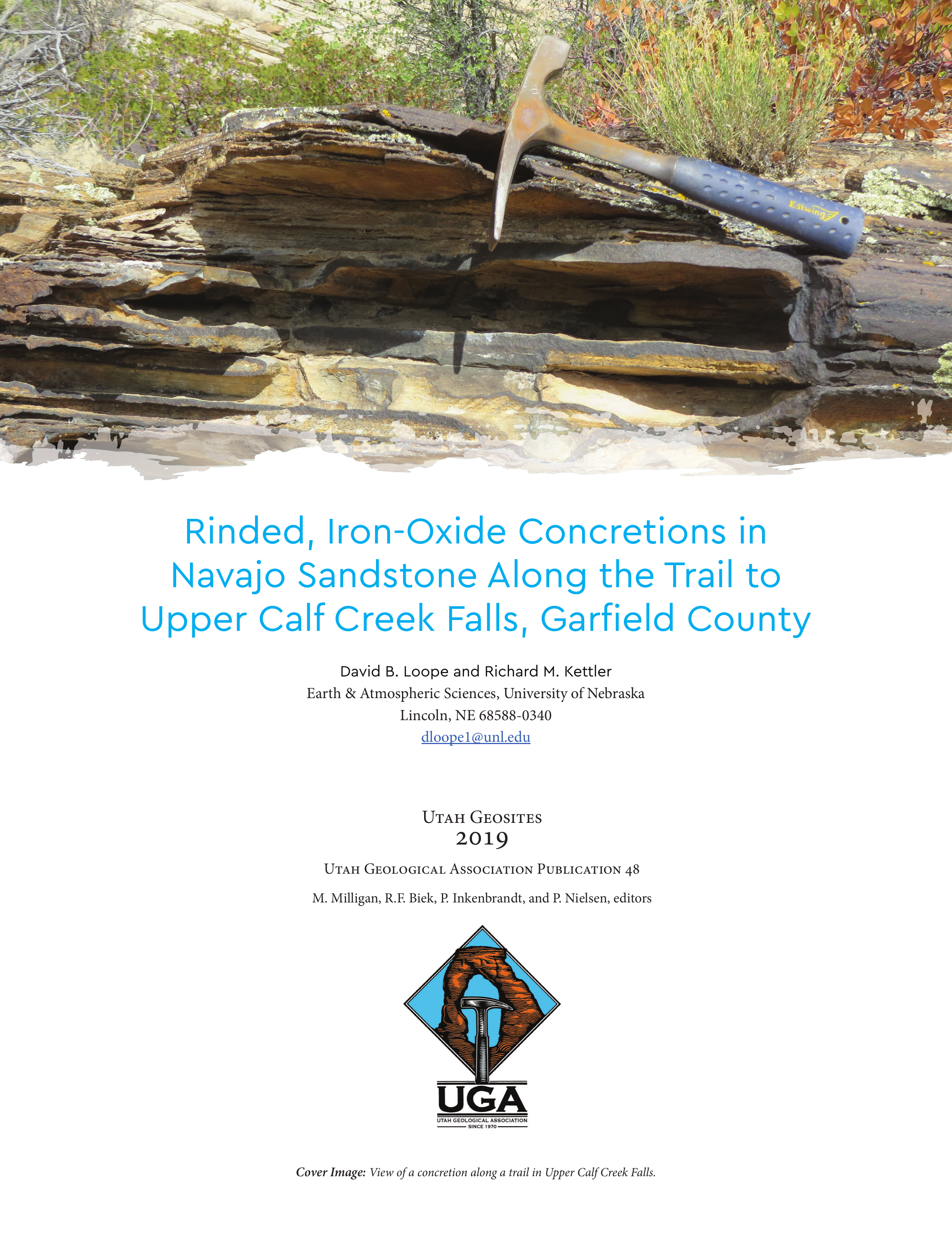Rinded, Iron-Oxide Concretions in Navajo Sandstone Along the Trail to Upper Calf Creek Falls, Garfield County
Abstract
Concretions are hard rock masses, usually spheroidal, but commonly oblate or discoidal, that are formed by strongly localized precipitation of minerals in the pores of an otherwise weaker sedimentary rock (see Bates and Jackson, 1980, for a more extensive definition). The iron-oxide-rich concretions in the Jurassic Navajo Sandstone in southern Utah are unusual in two fundamental ways. First, they are cemented by iron oxide (Fe2O3, or Fe(OH)3); most other concretions are cemented by silica (SiO2), calcite (CaCO3), dolomite (CaMg(CO3)2), or siderite (FeCO3). Second, unlike other concretions, they are not strongly cemented throughout, but instead, the iron oxide is concentrated in a very strongly cemented, sharply defined, exterior rind or shell. In the smaller concretions, the entire interior lacks iron-oxide cement, and is similar to the rock outside the concretion; in the larger concretions, there is a central zone that is strongly cemented by iron oxide, but the sandstone between the central core and the rind has no iron-oxide cement.

Copyright (c) 2019 Utah Geological Association

This work is licensed under a Creative Commons Attribution 4.0 International License.

